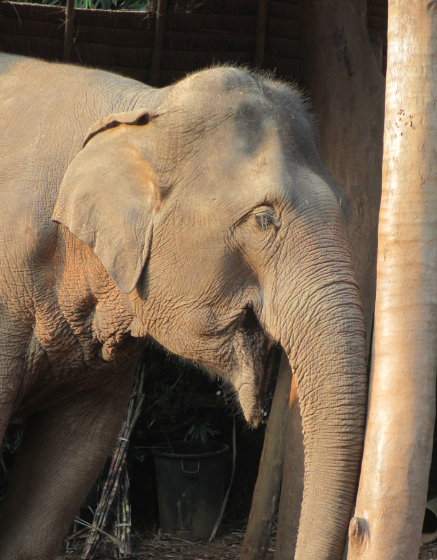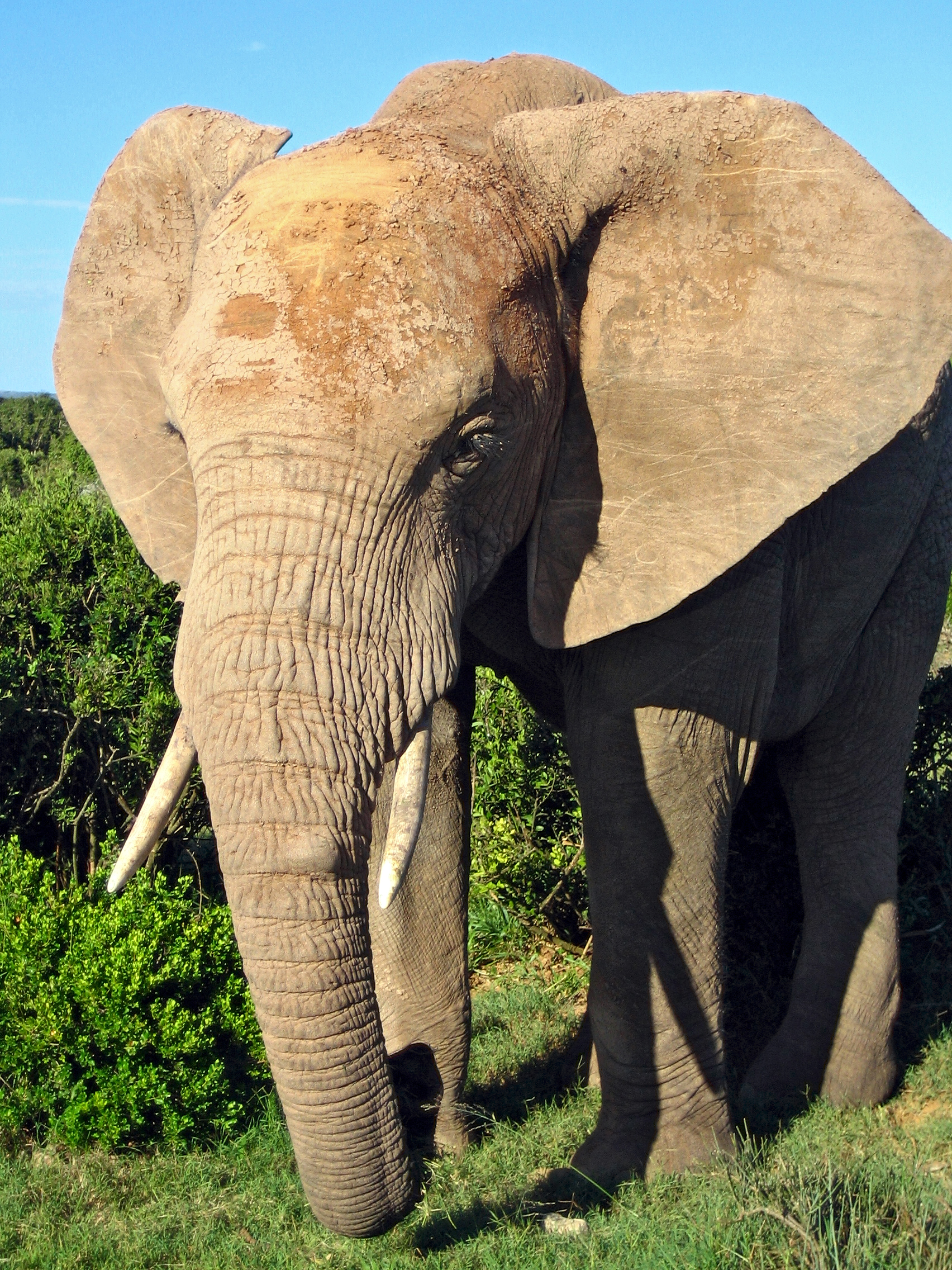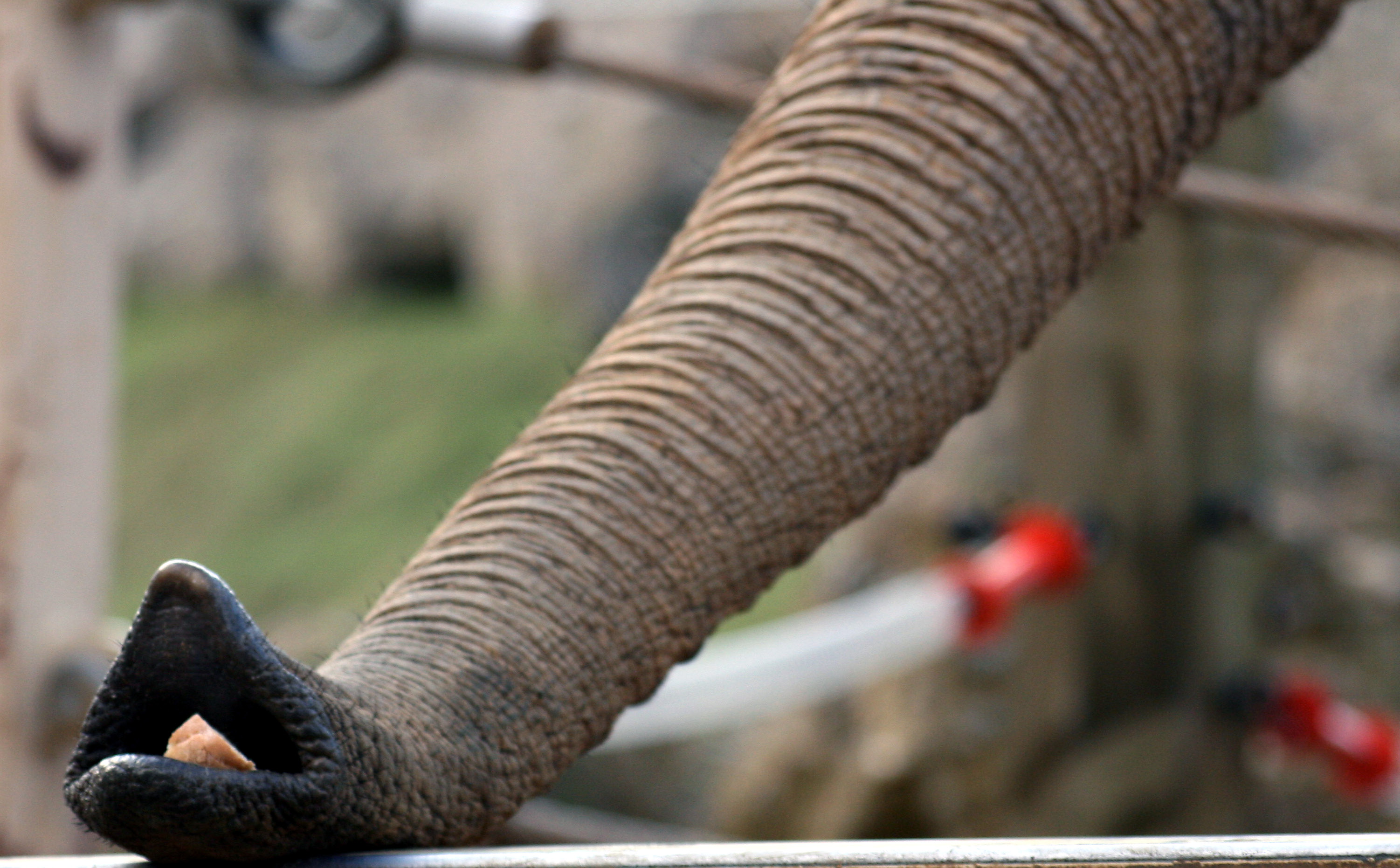By Sophie Wasserman
As Rebecca discussed in a previous blog post (link), Asian and African elephants have been separate species for over 7.8 million years. To put that into perspective, scientists currently estimate humans and chimps shared their last common ancestor even more recently than that, about 5-7 million years ago. Though it’s easy to lump Asian and African elephants together under the umbrella of big, gray, and wrinkly, there are actually quite a few ways to tell the species apart.
As Rebecca discussed in a previous blog post (link), Asian and African elephants have been separate species for over 7.8 million years. To put that into perspective, scientists currently estimate humans and chimps shared their last common ancestor even more recently than that, about 5-7 million years ago. Though it’s easy to lump Asian and African elephants together under the umbrella of big, gray, and wrinkly, there are actually quite a few ways to tell the species apart.
[Side note: For
simplicity’s sake, the comparisons here are between the Asian elephant (Elephas maximus) and the African
savannah elephant (Loxodonta africana).
There is a third species of elephant, the African forest elephant (Loxodonta cyclotis) who is smaller than
their savannah cousins, with rounder ears and thinner tusks, but not as much is
documented about this elusive species.]
Location: When
encountering wild elephants, the easiest way to tell the species apart is to remember where you are. The largest
concentration of wild Asian elephants is India, but they can be found
throughout the continental Southeast Asia, as well as Sri Lanka, Sumatra, and
Borneo. African elephants are found throughout central Africa as well as
smaller pockets of southern and eastern Africa.
Size: African
elephants are bigger! Generally, Asian elephants range in height from about
2-3.5 m tall (6.5-11 ft) and weigh anywhere from 2,000 to 5,500 kg
(4,500-12,000 lbs). African elephants, on the other hand, are the largest living
land animal reaching 3-4 m (9-13 ft) at the shoulder and 4,000-6,300 kg
(8,818-13,889 lbs) in weight.
Body shape: African elephants have a dip in their back while Asian elephants have a straight, or sometimes humped, spine. The highest point on an African elephant’s body is their shoulders, while the highest point on an Asian elephant’s body is their head. As a result, caretakers typically ride in the sway of the back of an African elephant, as opposed to the traditional mahout style of riding the neck of Asian elephants.
 |
| Asian elephants have a straight or arched back |
 |
| African elephants have a dip in their spine via Wikimedia Commons |
Head: While
African elephants have a broad, flat forehead, Asian elephants have a two-dome
structure, with more prominent temporal ridges. Technically African elephants
tend to have larger brains, due to their larger size, but it has yet to be
shown that one species is smarter than the other.
Lips: Asian
elephants have elongated bottom lips that taper to a point and droop in an
almost comical fashion. The bottom lips of African elephants are shorter and
rounder, almost completely hidden by their trunks.
 |
| Asian elephants have two domes and long lips |
Ears: A general rule of thumb in the family Elephantidae: the closer to the equator, the bigger the ears. African elephants have much larger ears than Asian elephants, allowing them to dissipate more heat through the thinner skin on the surface of their ears. The now extinct wooly mammoth, who lived way up near the North Pole, had even smaller ears than modern Asian elephants. Another trick some people use to remember the difference? The ears of some African elephants loosely resembles the shape of the African continent.
 |
| African elephants have flat foreheads and larger ears via Wikimedia Commons |
Skin: African elephants also typically have more wrinkles in their skin, for the same reason their ears are larger: regulating body temperature. The grooves and folds trap moisture on their body, allowing the elephant to keep cooler for longer throughout the day. The skin of Asian, but not African elephants, will also change color. As Asian elephants age, they naturally lose some of the pigmentation in the skin around their ears, head and trunk, developing their very characteristic pink speckled appearance.
 |
| Asian elephants have smaller ears and show depigmentation |
Tusks: Both male
and female African elephants grow long tusks (the record is 10 ft 8 in!) but in
Asian elephants, only the males do. Females either have short “fangs” called tushes, or nothing at all. This is part
of the reason that poaching is much more of a problem in Africa than Asia,
since twice the individuals produce ivory (there are many factors influencing
poaching and the ivory trade; for more info see our previous blog post)
 |
| Asian elephant female with tushes |
Trunk: African
elephants have two finger-like extensions on the end of their trunk, similar to
a thumb and forefinger. An African elephant can use these two fingers to pick
up and manipulate an object as small as a single sunflower seed! Asian
elephants on the other hand have only one finger on the top of their trunk.
They have similar dexterity to that of African elephants, but typically grasp
things like food by scooping them up and curling them into the crook of their
trunk.
 |
| African elephants have two fingers on the end of their trunks via Wikimedia Commons |
 |
| Asian elephants only have one finger on their trunks Photo credit: Rebecca Shoer |
Toes: If you
happen to find a footprint, check the toes! Asian elephants have 5 toenails on
their front feet and 4 on their back feet, while African elephants only have 4
on the front and 3 on the back.
IUCN Status: Finally,
according to the International Union for the Conservation of Nature, Asian
elephants are considered “endangered,” meaning over the past 50 years or 3
generations, over 50% of the wild population has been lost, leaving them
uncomfortably close to extinction. African elephants are still technically
“vulnerable,” but if current poaching rates continue, this may not stay a
difference between the species for much longer.
This list is not comprehensive (there are even subtle
differences in the number of ribs each species has or the shape of their teeth)
but it should give you head start on impressing your friends the next time you’re
at the zoo or watching the latest nature documentary. And if you’re interested in
ensuring that captivity and old film reels won’t be the only place you can see all
species of elephants in the future, learn how you can get involved here: http://bit.ly/1bv0EYh.
References:
http://library.sandiegozoo.org/factsheets/asian_elephant/asian_elephant.htm
http://www.livescience.com/3996-humans-chimps-split.html
http://seaworld.org/en/animal-info/animal-infobooks/elephants/physical-characteristics/
http://library.sandiegozoo.org/factsheets/african_elephant/african_elephant.htm
Media:
African elephant in Pittsburgh Zoo by Jason Pratt via Wikimedia Commons
African elephant in South Africa by Trevor Ohlssen via Wikimedia Commons
Elephant - Colchester Zoo by Keven Law via Wikimedia Commons
this is so interesting
ReplyDeleteAnimals Asian Elephant Photos
ReplyDeleteHow do you tell the difference between female and male African elephants without look at their "private" place?
ReplyDeleteThis company is best known for its services regarding bitcoins to Cash. All our focus is on the Bitcoins to Cash Withdrawal Simple into your fiat cash
ReplyDeleteSuperb. I really enjoyed very much with this article here. Really it is an amazing article I had ever read. I hope it will help a lot for all. Thank you so much for this amazing posts and please keep update like this excellent article. Thank you for sharing such a great blog with us.
ReplyDeletehttps://www.lcrenovation.co.uk/house-extension-in-balham/
House Renovations in Balham
I recently came across your blog and have been reading along. I thought I would leave my first comment. I don’t know what to say except that I have enjoyed reading. Nice blog, I will keep visiting this blog very often
ReplyDeleteWashing machine repairing services in Rawalpindi,